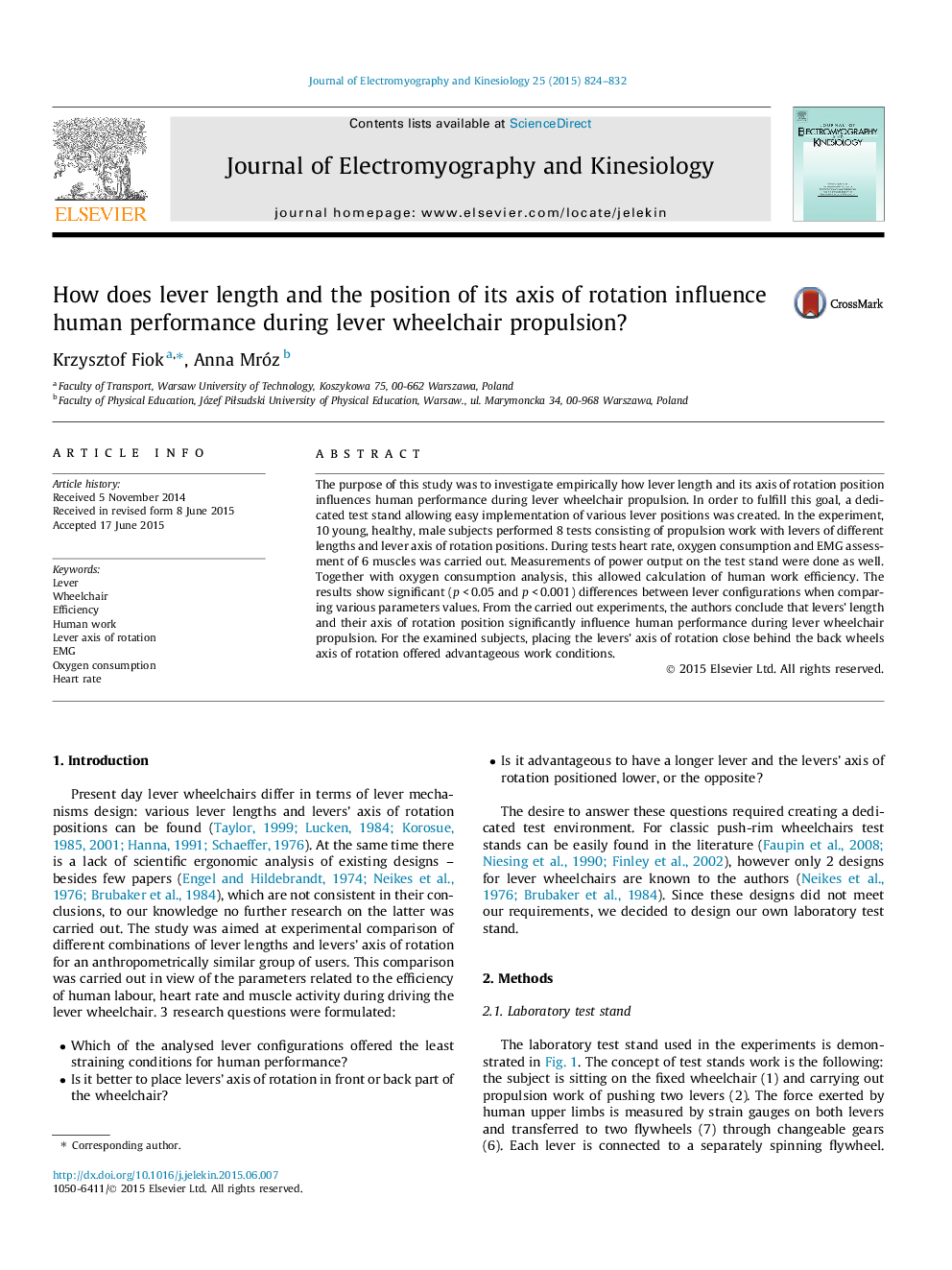| Article ID | Journal | Published Year | Pages | File Type |
|---|---|---|---|---|
| 6210335 | Journal of Electromyography and Kinesiology | 2015 | 9 Pages |
The purpose of this study was to investigate empirically how lever length and its axis of rotation position influences human performance during lever wheelchair propulsion. In order to fulfill this goal, a dedicated test stand allowing easy implementation of various lever positions was created. In the experiment, 10 young, healthy, male subjects performed 8 tests consisting of propulsion work with levers of different lengths and lever axis of rotation positions. During tests heart rate, oxygen consumption and EMG assessment of 6 muscles was carried out. Measurements of power output on the test stand were done as well. Together with oxygen consumption analysis, this allowed calculation of human work efficiency. The results show significant (p < 0.05 and p < 0.001) differences between lever configurations when comparing various parameters values. From the carried out experiments, the authors conclude that levers' length and their axis of rotation position significantly influence human performance during lever wheelchair propulsion. For the examined subjects, placing the levers' axis of rotation close behind the back wheels axis of rotation offered advantageous work conditions.
